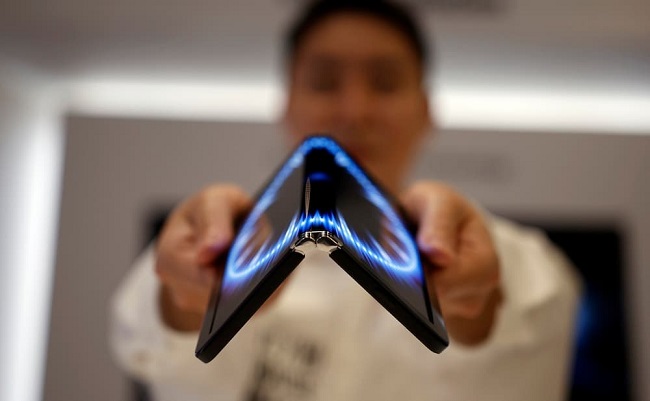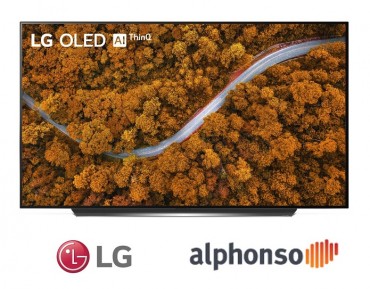
LG Display Co. showcases an 8-inch foldable OLED display at CES 2023 in Las Vegas on Jan. 3, 2023, in this file photo provided by the panel maker.
SEOUL, Jan. 27 (Korea Bizwire) — LG Display Co. reported its third consecutive quarterly loss Friday on weak demand for its panel products and falling prices.
The major panel maker reported an operating loss of 875.7 billion won (US$709.3 million) for the fourth quarter, compared with a profit of 476.4 billion won a year ago, as high inflation and rate hikes continued to sap consumers’ appetite for tech gadgets.
It posted a net loss of 2.09 trillion won for the October-December period, swinging from a profit of 179.5 billion won a year earlier. Sales fell 17.1 percent to 7.3 trillion won.
The operating loss was 11.8 percent higher than the average estimate, according to a survey by Yonhap Infomax, the financial data firm of Yonhap News Agency.
LG Display went into a deficit in the second quarter for the first time in two years as a pandemic-driven boom in IT devices ended amid rising prices and interest rates.
Demand has been falling rapidly over the past several months for liquid-crystal display (LCD) and premium organic light-emitting diode (OLED) panels. Poor macroeconomic conditions have also caused enterprise demand to slow.
According to research firm Canalys, global shipments of desktops and notebooks fell 16 percent on-year to 285.1 million units last year. Smartphone shipments also declined by 11 percent to fewer than 1.2 billion last year
The research firm predicted the challenging environment for the PC industry to continue until the second half of the year, and flat to marginal growth for the smartphone market this year.
For all of 2022, LG Display reported a net loss of 3.19 trillion won, swinging from a profit of 1.33 trillion won a year earlier.
Its operating loss hit a record low of 2.08 trillion won for the year, compared with a profit of 2.23 trillion won a year ago. Annual revenue fell 12.5 percent to 26.15 trillion won.

The file photo provided by LG Display Co. on Jan. 5, 2023, shows a passenger watching a sports program on a rollable panel inside the company’s autonomous concept car.
LG Display said a decline in demand for TV sets and panels, coupled with all-time low LCD panel prices, significantly impacted the company’s overall performance.
Panels for TVs accounted for 25 percent of the revenue in the fourth quarter, while panels for IT devices, including monitors, laptops and tablets, accounted for 34 percent, and those for mobile devices and the others accounted for 34 percent.
Automotive panels took up 7 percent.
The company said it was hoping to turn to a profit from the second half of this year by reducing its investment budget to establish a sound financial structure and expanding its high-value made-to-order businesses amid high macroeconomic uncertainty and sluggish demand.
LG Display has cut production capacity in half at its Chinese factory since early this year to save costs. It discontinued domestic production of LCD TV panels at the end of last year.
The panel maker has accelerated its push into the automotive panel industry, a sector considered to be a future growth engine.
During CES 2023 in Las Vegas earlier this month, it set up a booth specialized in cutting-edge automotive panels for the first time at the world’s biggest tech show, where it showcased a self-driving concept car.
The company said there was a huge growth potential in the global automotive panel business, as demand has risen sharply in recent years due to the popularity of electric vehicles, and better connectivity and electronics in vehicles.
The automotive display market is forecast to grow 8.7 percent annually to reach US$10.5 billion in 2025, according to research firm Omdia.
LG Display shares gained 4.34 percent to close at 14,180 won Friday, far outperforming the wider market’s 0.62 percent gain.
(Yonhap)






